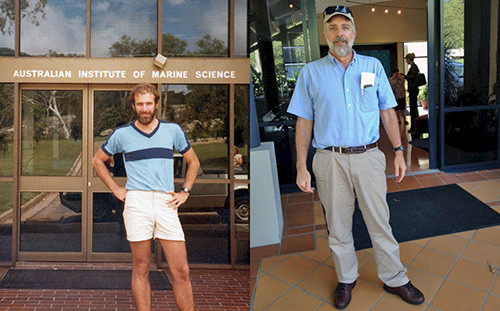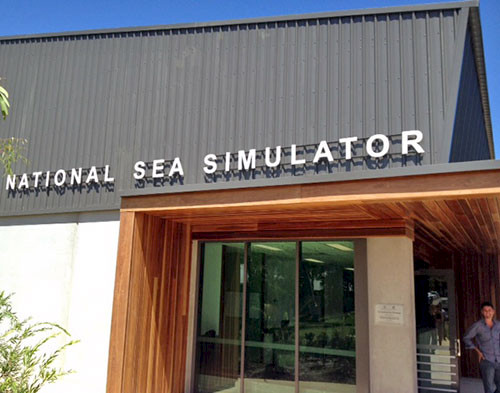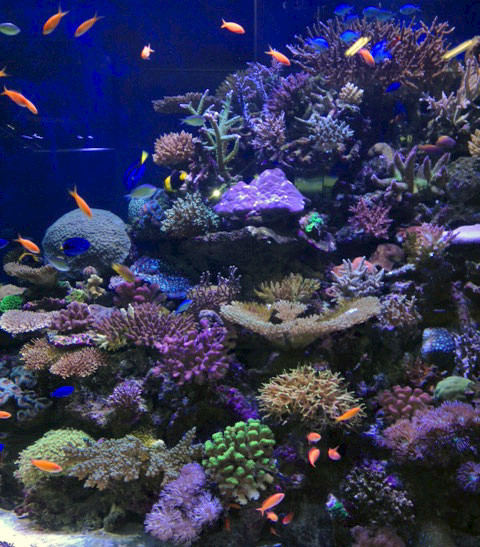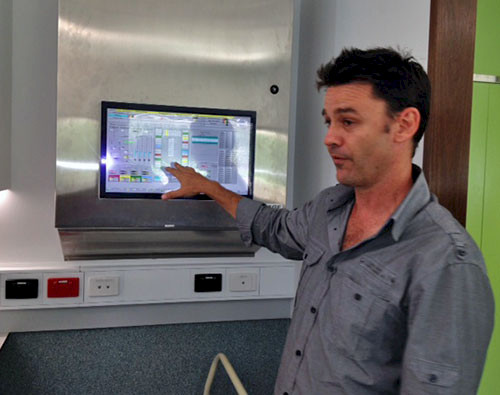A visit to the Australian Institute of Marine Science
Bill Dennison ·My first visit to the Australian Institute of Marine Science (AIMS) was in 1985, when I joined Doig Capone and Linda Duguay on a collaborative project sponsored by the U.S. National Science Foundation. I was on a Coastal Marine Scholar postdoctoral fellowship at the Marine Sciences Research Center (now the School of a Marine and Atmospheric Sciences) at Stony Brook University. We were hosted by Bruce Chalker and Dave Barnes and made various research cruises aboard the AIMS vessels, R/V Sirius and R/V Lady Baston across a cross-shelf transect (Pandora, Hopkinson and Bowl Reefs). I had a wonderful time at AIMS in 1985-1986. I had been interested in water motion effects on seagrasses and Dave Barnes and I investigated the effect of water motion on coral calcification and photosynthesis. I ended up staying at AIMS longer than planned, so that Dave and I were able to publish a paper entitled 'Effect of Water Motion on Coral Photosynthesis and Calcification' (1988).
Twenty nine years later, we pulled up to the entrance of AIMS at the end of a long drive from Townsville. Terry Done, one of my favorite people, is 'actively retired' and was there to facilitate a workshop on developing trait-based relationships of various climate change components. I ran into several other old friends at AIMS, including Jamie Oliver, the new Associate Director of Research, and various researchers; Ken Anthony, Dave Souter, Miles Furnas, Dave McKinnon, Lyndon Llewellyn, Britta Schaffelke, Janice Lough and Katharina Fabricius.

There were several things new at AIMS, including an addition to increase office space and the National Sea Simulator facility. The library in the central atrium was much reduced as electronic journals have replaced paper versions. In 1985-1986, I spent many enjoyable hours in the AIMS library. They have converted much of the library into seating areas since the modules ('mods') are now swipe card access only, so it is not as easy to wander into the labs or offices of colleagues. The other new aspect about AIMS is the broader reach. AIMS has large research vessels on both coasts: the R/V Solander on the west coast and the R/V Cape Ferguson on the east coast. AIMS now has facilities and people in Perth in Western Australia and Darwin in The Northern Territory.

We were given a tour of the newly constructed National Sea Simulator facility. This facility was designed to allow researchers to manipulate seawater temperature, acidity, turbidity, and salinity to assess the responses of corals and other tropical marine organisms. This is an amazing facility, with sophisticated controls and capable staff. I recalled my water motion experiments at AIMS nearly three decades ago where I used aquaria on the laboratory veranda and 'baby-sat' the corals around the clock. Fortunately, I was living in a cabin on site and I could duck over regularly. But I would have loved to have access to the National Sea Simulator.

My favorite time of the day at AIMS was immediately after the convoy of government cars leaves at 4:40pm. A quiet peace settles over the late afternoon shadows and wallabies come out of the surrounding bush to feed on the AIMS lawn. Just as we did in 1985-1986, soon after the crowds departed, we reached for a cold beer, and savored the moment.
What I enjoy about AIMS is the immersive learning environment. AIMS researchers intensively study tropical marine ecosystems, and there are many active projects, research cruises and experiments that I found interesting twenty nine years ago and again on this trip. The support staff at AIMS were amazing in my first visit (e.g., Monty Devereaux) and clearly are amazing still (e.g., Craig Humphrey). AIMS continues to be a unique facility, a place to unlock the secrets of the Great Barrier Reef.

About the author
Bill Dennison

Dr. Bill Dennison is a Professor of Marine Science and Vice President for Science Application at the University of Maryland Center for Environmental Science.